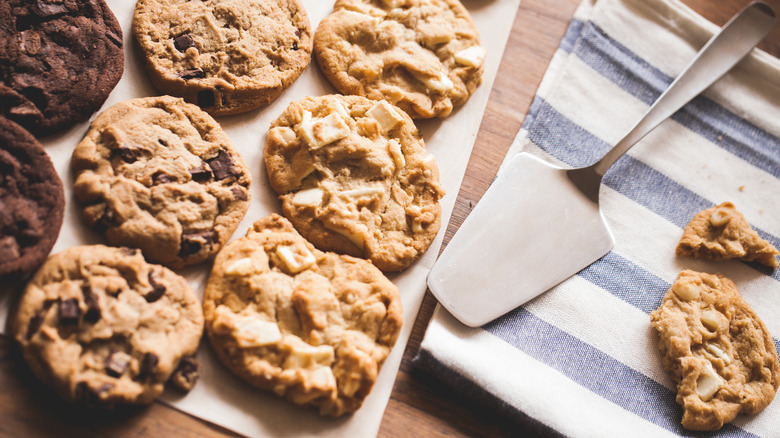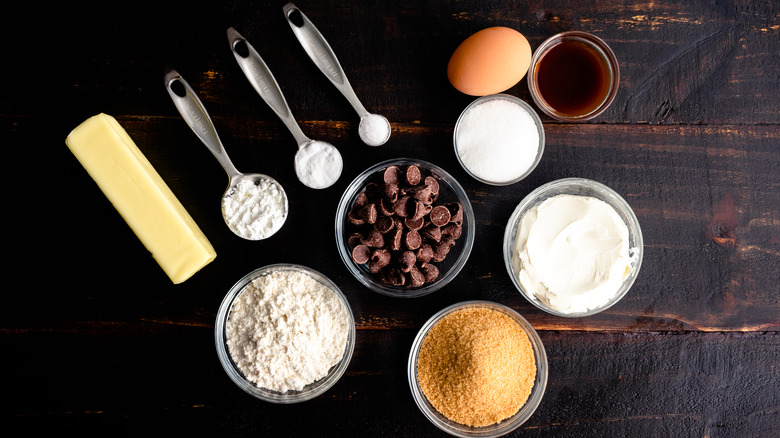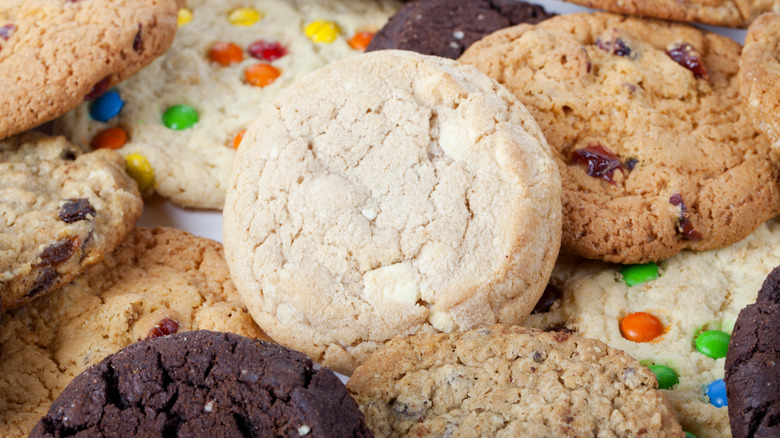Why You Should Use Both Baking Soda And Powder To Make Cookies
When setting out to bake your favorite cookie recipes you've probably noticed that most call for either baking soda or baking powder. Both of these ingredients are leavening agents that help your cookies rise and achieve the right texture. At the same time, they help to tenderize the baked goods.
But don't get fooled into thinking they're same thing. Baking soda, or bicarbonate of soda, is a base, which means it has a high pH. In order for it to actually work in your cookies, it needs to react with an acid. That's where baking powder comes in — this ingredient consists of baking soda plus an acid, typically cream of tartar.
So, how does all that affect your cookies? In short, baking soda leads to spreading and baking powder leads to rising. When you combine the two, you get the best of both worlds — a cookie that's golden brown, but not too tall and cakey, or too thin and chewy. The perfect texture.
Using both gets you a lovelier lift, and satisfying spread
When you make cookies using both baking soda and baking powder, you increase the pH level of the dough. The baking soda helps to neutralize acids and ensure leavening. That leads to taller, puffier cookies that still have a slightly chewy texture. If you just use baking soda, your treats risk becoming flat and overly chewy. On the other hand, if you just use baking powder, they become more cakey.
Texture isn't the only reason to combine both leavening agents. A higher pH also keeps proteins in the dough from solidifying as quickly. That leads to more spreading when you bake the sweets. At the same time, it helps ensure the treats have an even bake, although you'll still get that signature crispy edge that cookies are known and loved for. Baking soda alone here could cause flat, thin cookies. In contrast, just baking powder can cause overly doughy cookies.
Other tricks for perfectly textured cookies
Beyond using both baking soda and baking powder, there are a few other tips and tricks to help your treats get a more balanced texture and better flavor. For instance, another important secret to making cookies is to chill the dough before baking. Even just half an hour of chill-time in the fridge can help the flavors meld together and result in a chewier, more bakery-like texture.
Leaveners aren't the only ingredients that can have an impact on your cookies' texture; flour is another major player. The more flour you use in your sweets, the denser the cookies tend to be. If that's the texture you're after, you might need to use a bit more flour in your cookies than the recipe says. Too much flour can make the treats dry, so tread carefully.
Finally, you can also change the texture of your cookies by mixing up how you add the butter. Many recipes call for you to cream the butter and sugar, but for chewy cookies, melted butter is the secret. This addition leads to your treats deflating and becoming fudgy in the center after you take them out of the oven, which creates a chewier texture. Next time you bake cookies, regardless of what type that might be, keep these tips in mind and remember to use both baking soda and baking powder for the ideal consistency.


